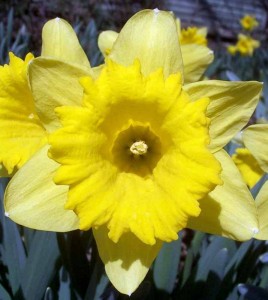Time to Get Growing
Ever wonder why some people can grow bigger and better flowers and veggies than you? Is it their green thumb, the weather or the lack of Arbuscular Mycorrhizal Fungi in the soil?
That’s the stuff that makes young roots proliferate. There seems to plenty of it in good dirt like the floor of the forest but you definitely have a problem if you’ve been trying to grow plants where the earth has been freshly turned and clay lies on top. Then, you need to dip the roots of your new plants in AMF before planting. It will help your plants survive, take up water and nutrients, resist drought and disease and generally grow better.
Of course, there is more to do than just that. You should enrich your soil with good top soil and rich, organic compost. Your garden needs nitrogen, phosphorus and potassium too. But if you start with AMF, you’ll be ahead of the game.
Scientists now believe that the chance merging of AMF and vegetation growing in the ocean played a vital role in bringing plant life from the sea to land. Where AMF is found in greatest supply, all vegetation flourishes. So if you live where the soil is poor, it might be worth a shot.
Here in Kansas, spring is definitely on the way. The crocuses and surprise lilies are up and the grass is greening. If you like to start seeds indoors, now’s the time to do it. Here’s a good web site that tells you how.
Arranging spring flowers is a snap. As soon as your tulip heads shows color, whether in your garden or where you shop, bring them into your home. Cut a bit off the stems and put them in water. They are thirsty little critters and allergic to heat. I love placing one or two tulips in a bud vase with a leaf. Their stems often bend but that’s normal and makes them look so graceful. They should last five to seven days.
Some people like to break the stems of daffodils even with the ground. I cut mine as soon as they show color. They too need to have a small amount of their stems cut off before plunking them into water. Yellow daffodils bunched together in a square or round vase will warm the heart and bring spring into your living room.
Speaking of growing things, here’s an alarming statistic. Nearly 90 percent of the worlds corn, which by the way, is subsidized by our government, is used for either ethanol (40 percent) or animal feed (50 percent). Along with other crops such as cotton, soy beans and vegetables, it is genetically engineered and sprayed with insect killing herbicides. One of the shattering results could be the end of biodiversity.
At the risk of losing big money from the industry’s lobbyists, our congressmen do nothing. SourceWatch is one web site to this check out.
Meanwhile, enjoy your herbicide free garden or someone else’s.



Leave a Reply